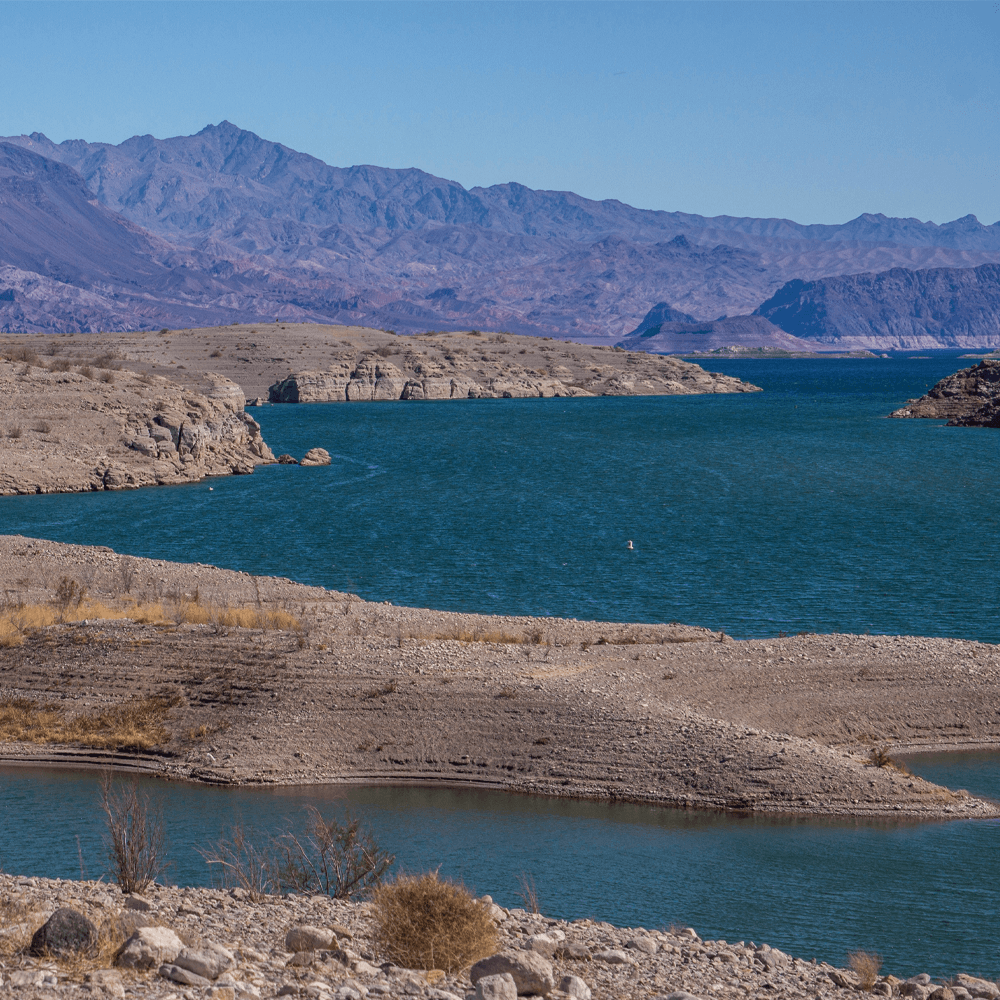AMWUA Blog
BY: AMWUA StaffWhat you need to know about the Colorado River as we enter a Tier 2a Shortage

With the arrival of 2023 comes a Tier 2a Colorado River Shortage. Now that it is here, what does it mean, and how does it impact Arizona and the AMWUA cities? We thought answering frequently asked questions would be helpful.
What is going on with the Colorado River?
Due to historic drought, hotter and drier conditions, and more water being used than nature can supply, the Colorado River is in a crisis, and our reservoirs are declining at an alarming rate. These worsening conditions bring new challenges and pressures to water utilities as they will have even less Colorado River water than initially anticipated.
To address the dire situation, the US Bureau of Reclamation and the Basin States recognize that significant action to reduce demand from the River must be taken before we reach a point where water cannot flow downstream from Lake Mead or Lake Powell. These actions include significantly reducing the use of the Colorado River water in 2024 and perhaps as soon as this year.
What does a Tier 2a Shortage mean for Arizona?
In a Tier 2a Shortage, the Central Arizona Project will receive 592,000 acre-feet less Colorado River water to deliver in 2023, which includes an additional 80,000 acre-feet cut compared to the 2022 Tier 1 Shortage.
Here are the prescribed cutbacks in a Tier 2a Shortage:
- Arizona: 592,000 acre-feet, which is approximately 21% of the state's annual apportionment
- Nevada: 25,000 acre-feet, which is 8% of the state's annual apportionment
- Mexico: 104,000 acre-feet, which is approximately 7% of the country's annual allotment
- California: There is no required water savings contribution for California in 2023
How will the Tier 2a Shortage impact the cities?
While this deeper level of shortage will impact some of their water supplies, the ten AMWUA cities are still able to meet the water demands of their communities during a Tier 2a Shortage.
The AMWUA cities have been preparing for different Colorado River shortage scenarios by methodically, proactively, and carefully investing in diverse and robust water supplies, which brings resiliency and reliability to their water systems.
Will more cuts be required in addition to those in the Tier 2a Shortage?
Unfortunately, the reductions in a Tier 2a Shortage are not enough to prevent Lake Mead from reaching deadpool. Reclamation and the seven Basin States need a comprehensive plan to significantly reduce demand to stabilize the Colorado River situation as soon as possible.
Voluntary actions by only a few will not solve the problem or prevent this crisis from worsening. There must be a regional effort to decrease Colorado River water use by all agricultural, municipal, and tribal water users in all of the Basin States.
The AMWUA cities know additional cuts will be far more impactful than what they are facing in a Tier 2a Shortage; we just do not know exactly how severe they will be.
How are the cities responding to the likelihood of further reductions?
The AMWUA cities understand they will have significantly less Colorado River water moving forward. In the meantime, they continue to look for innovative and attainable solutions by:
- Preparing for the worst-case scenario and every scenario in between.
- Analyzing infrastructure needs to ensure water can be moved where needed.
- Optimizing treatment facilities and access to their other water supplies.
- Strategically planning to strengthen the reliability and resiliency of their diverse water supplies, including pursuing Direct Potable Reuse (DPR).
- Expanding conservation programs and customer outreach, including reducing water use at their municipal facilities.
What impact is the uncertainty about the Colorado River having on the cities?
Cities run on water – it's a necessity, not a luxury. And the Colorado River is a key water supply for the ten AMWUA municipalities to meet the water demands of 3.7 million residents and the Valley's thriving high-tech manufacturing, defense, financial services, health care, higher education institutions, and other services that support the regional and national economies. The uncertainty is very challenging for municipal water providers that need stability and predictability of how much Colorado River water will be available in the future.
Utilities need time to make operational adjustments for reduced water supplies to prepare treatment plant operations and delivery systems to meet the demands of their communities. Implementing these changes requires significant money from already set budgets and will stretch their existing workforce further.
What's next?
Reclamation needs to take decisive action. Every water user in all sectors within each Basin State must commit to durable reductions. Otherwise, the conditions throughout the Colorado River system will reach catastrophic levels. That's why decreasing the River's demand today is the only way we will protect the River's future, benefiting everyone.
The ten AMWUA cities are committed to being part of the solution as we all wait for the Reclamation to devise a plan that details how the additional Colorado River cuts will be distributed. The cities continue to prepare amidst the uncertainty by ramping up their robust conservation programs, being engaged in Colorado River discussions, and advocating on behalf of their residents to ensure their desert communities remain resilient for the long term.
To print or save this week's blog, a PDF version is available HERE .
For additional information on the Colorado River situation, we recommend you peruse our Blog Page.
For over 50 years, Arizona Municipal Water Users Association has worked to protect our member cities' ability to provide assured, safe, and sustainable water supplies to their communities. For more water information, visit www.amwua.org .
